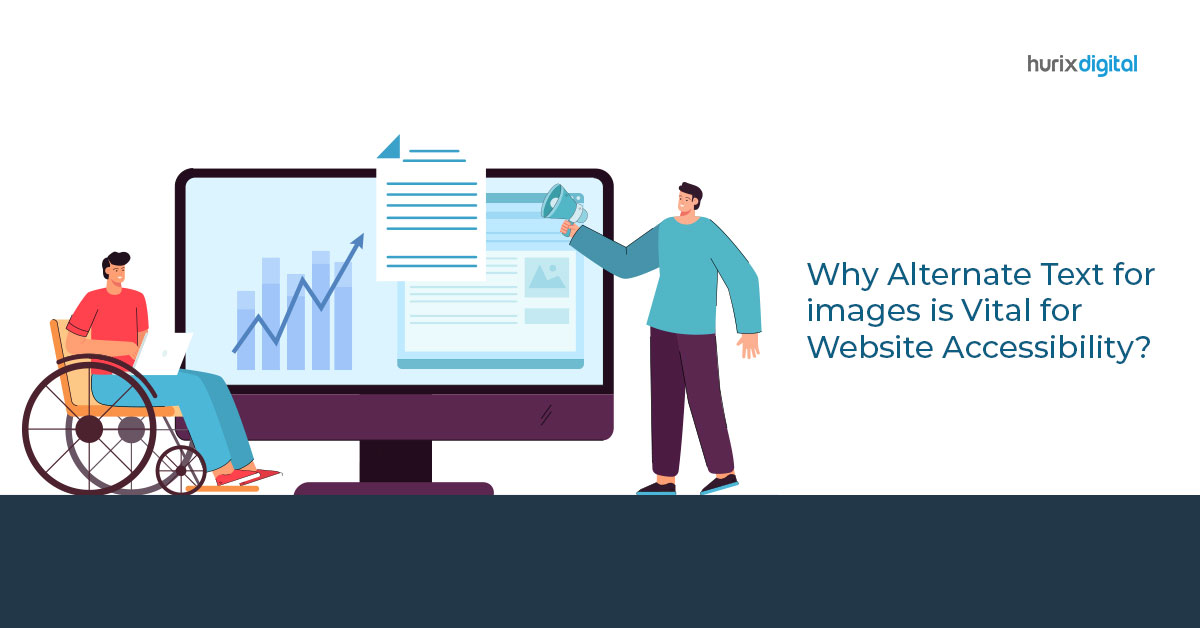Why Alternate Text for Images is Vital for Website Accessibility?
In today’s world, digital accessibility is more important than ever before, as more and more people rely on technology to access information and communicate with others. However, not all digital content is created equal, and some users may face barriers to accessing information due to their disabilities. One way to make digital content more accessible is by using alternative text, also known as alt text, to describe images. Alt text for images provides a textual description of images, allowing users who cannot see them to understand their content and context.
In this blog, we will discuss the importance of alt text and how it benefits disabled people by making digital content more accessible to them.
What is Alt Text for Accessibility?
Images play a crucial role in creating content. They can be used to illustrate a point, evoke emotions, or simply make content more engaging. However, it’s essential to keep in mind that not everyone can read images in the same way. Knowing what is alt text for accessibility helps your organization in more ways than you can imagine. People with visual impairments, for instance, rely on alternative text (alt text) to understand the content of images. In this blog, we will discuss the importance of alt text, different types of images, and how to write effective alt text for each type of image.
The Importance of Providing Alternative Text
Alt text is a text description of an image that is read by screen readers or other assistive technology used by people with visual impairments. Alt text is essential for making images accessible to all users, including those who cannot see them. By describing the image, alt text allows users to understand the content and context of the image.
Also Read: How to Add Alt Text to Your Digital Content
Types of Images
There are different types of images used in content creation, each requiring a different approach to writing alt text. Here are some of the most common types of images:
- Decorative images: These images are used to make content more visually appealing but do not convey any information. Examples include background images or borders.
- Informational images: These images provide information that is relevant to the content. Examples include graphs, charts, and maps.
- Illustrative images: These images are used to illustrate a point or concept. Examples include photographs or drawings.
How to Write Alt Text for Different Types of Images
- Decorative images: For decorative images, alt text is not necessary, as they do not convey any information. However, it is best practice to leave the alt text attribute blank or use an empty alt text attribute to inform screen readers that the image is decorative.
Example: <img src=”example.jpg” alt=”” />
- Informational images: For informational images, the alt text should provide a concise description of the content of the image, including any relevant data or statistics.
Example: <img src=”chart.jpg” alt=”Pie chart showing the percentage of sales by region in 2021.” />
- Illustrative images: For illustrative images, the alt text should describe the image’s content and context, including any relevant emotions or themes.
Example: <img src=”photo.jpg” alt=”A group of children playing in a park on a sunny day.” />
Tips for Writing Alt Text
- Be concise: Alt text should be short and to the point, conveying the essential information of the image.
- Be descriptive: Alt text should describe the image’s content and context, including any relevant details.
- Be objective: Alt text should be written in an objective and neutral tone, avoiding subjective opinions or interpretations.
- Use proper punctuation: Alt text should be grammatically correct, using proper punctuation and sentence structure.
- Avoid unnecessary details: Alt text should focus on the most critical information in the image, avoiding irrelevant or extraneous details.
Also Read: A Beginner’s Guide to Creating Effective Alt Text for Images
Do’s and Don’ts of Alt Text Writing
Do’s :
- Do provide alt text for all images, including decorative images.
- Do use clear and descriptive language.
- Do use proper punctuation and sentence structure.
- Do consider the context of the image when writing alt text.
Don’ts:
- Don’t use generic phrases like “image of” or “picture of.”
- Don’t include unnecessary details or opinions.
- Don’t use overly complex language or jargon.
- Don’t forget to test the alt text with screen readers to ensure it is accurate and useful.
Conclusion
In conclusion, alt text plays a critical role in creating accessible digital content. By providing descriptions of images, alt text ensures that people with visual impairments can understand the content and context of images, making digital content more inclusive and accessible to all. The benefits of alt text extend beyond just disabled individuals, as it also improves the overall user experience and SEO of a website.
Content creators must prioritize accessibility and include alt text for all images to ensure that all users, regardless of their abilities, can access and enjoy the content. As we continue to move towards a more digital world, it’s essential to make accessibility a priority, and alt text is just one step towards creating a more inclusive and accessible online experience for all.
With an arsenal of accessibility experts, Hurix Digital is one such company that can take care of your website’s accessibility needs. Get in touch with Hurix Digital now.









